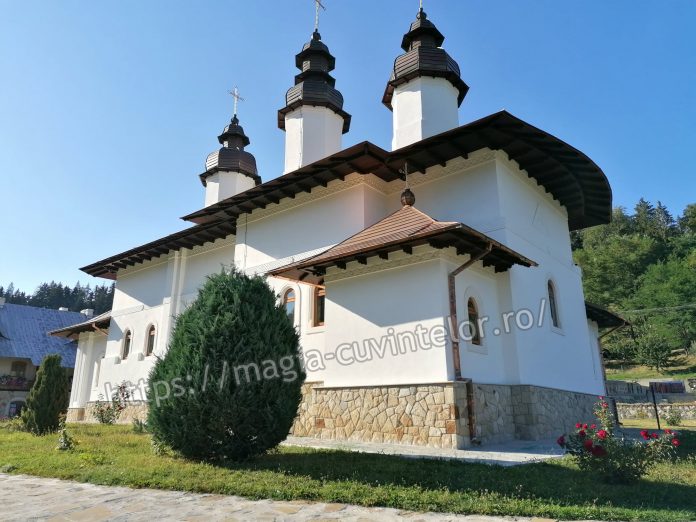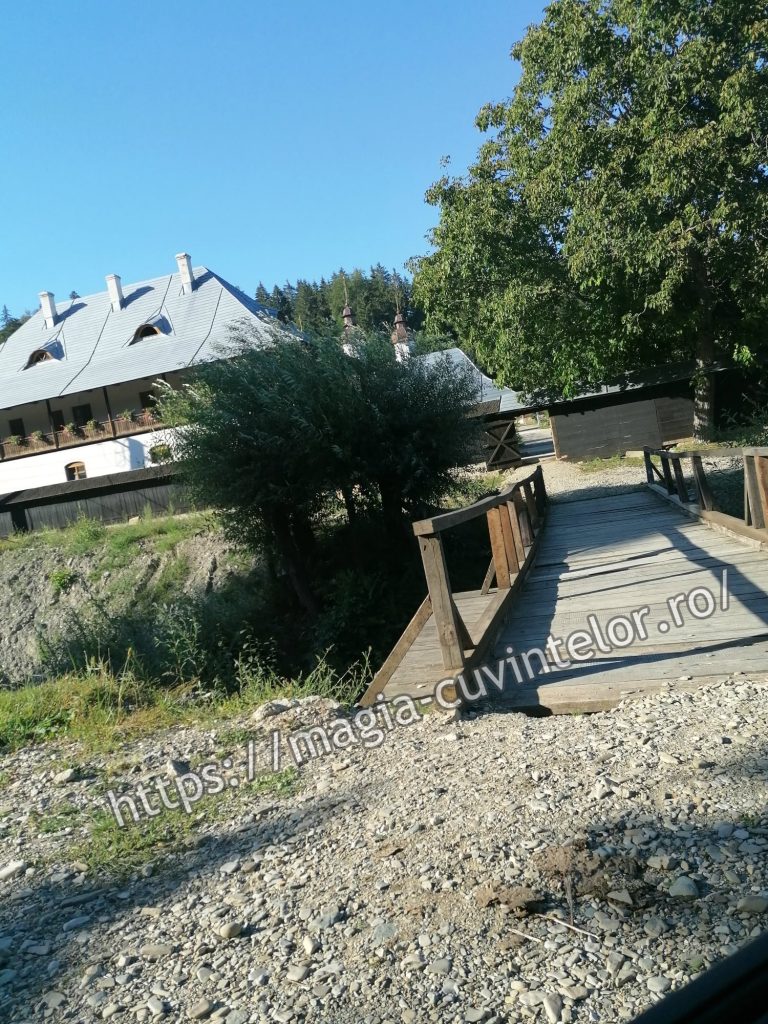
After leaving Durău Resort on the road that connects Târgu Neamț to Piatra Neamț, I entered Gârcina commune and it was a signpost to Almaș Monastery.
The first time I visited this monastery was in 2005, like many others monastery in Neamț County. I wanted to reconquer the territory of the monasteries, as I call this area.
At the entrance to the monastery I stepped on a wooden bridge and then I passed under the bell tower and entered another world. I remember perfectly that when I first visited this monastery the bridge was recently made. Although it is not a well-known monastery, it is important to me. It was one of the monasteries of my first pilgrimage.
The church of Almaș Monastery was built in Moldovan style, with some neoclassical and Russian influences. Fully conquered by this blessed place, I take out my phone, take some photos and film both the church and its surroundings.






The Almaș Monastery dates from the 15th century, under the leadership of the hermit Vasile Almaș, who came from Transylvania with his wife Maria. They will build in 1659, with the help of the locals, a wooden chapel dedicated to "Saint Nicholas", being considered the founders of this monastic settlement.
Later, the Almaș hermitage was destroyed by the Tartars, on which occasion Maria Almaș also lost her life. After the death of Maria Almaș, Vasile, her husband later became the Hieromonk Vasile from the community of Neamț monastery.
One of the most important icons of the Almaș monastery is that of Saint Anne, who works miracles. The first miracle that the icon of Saint Anne did was when the etherists set fire to the fire and tried to destroy the icons as well, but they could not lift it from its place.
In 1715, with the help of Catherine Cantacuzino, the wife of the farmer Jordan Cantacuzino, a hermitage was built here. It lasted until 1821, when it was destroyed by etherists. In 1959, the hermitage was closed by the communists. In 1987 the Almaș Hermitage was restored. It was one of the few monasteries re-established during communism. In 1990 the hermitage became a monastery and became a historical monument too.


If you think about it ... How? To visit Orthodox monasteries?
And what? First of all, you enrich your knowledge. I also visited holy places of other religious rites. I did it to develop my knowledge.
You can take a maximum of 500 characters from this article, the condition is to specify and visibly insert the link of the article.

Comments
Post a Comment